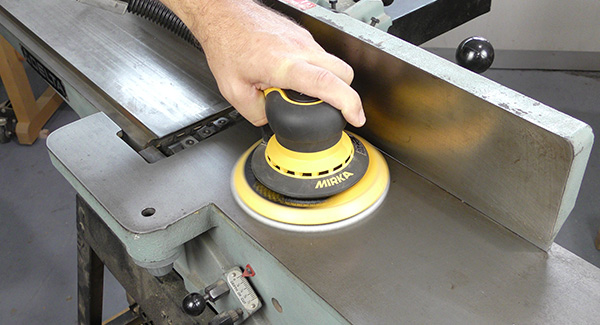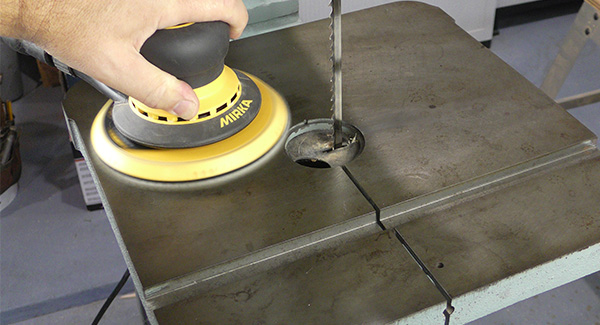Cast Iron Care for Your Workshop
Posted by The Team at 2Sand on 10 13 2023

Many trades rely on polished cast iron. The woodworker’s table saw, the welder’s fabrication stand, and the machinist’s Bridgeport bed all contribute to building our world, but to work as designed, they require care. Fortunately, regular maintenance of these machine-flattened surfaces only takes a few minutes every month or so. Even without visible rust showing on your cast iron surfaces, there will be a buildup of dirt and oxidation over time. Light cleaning can be done by hand as needed. We recommend using a non-woven abrasive pad in maroon (medium) or green (course) for light cleaning of smaller areas without risk of damaging the surface.

Even by hand it is easy to see the results right away. Use a drop or two of light machine oil to help loosen the dirt and make the cleaning easier. Wipe off the residue with a clean cloth when you are done.
For larger areas or those that need more attention, the process can be done with your sander. Mark your non-woven abrasive pad and cut it to fit your sander. Since you will be using your random orbit sander, we recommend using the white (cleaning) pad to get good results without damage to the surface.

The non-woven abrasive pad material will stick to your sander’s hook and loop pad, or you can add a pad protector to keep it in a place as you work. Use the sander to scrub the cast iron with the non-woven pad, again using a little light oil if needed to lubricate the working area. Remove any throat plates or other accessories that might be damaged during the cleaning. Use a clean cloth to wipe the surface down when done.

After cleaning, protect your surface with a coat of paste wax or whatever surface sealant you use to keep oxidation and rust at bay as well as allowing parts to slide across the cast iron. Whatever sort of cast iron surfaces you rely on, they will serve you well for many years if maintained properly.

